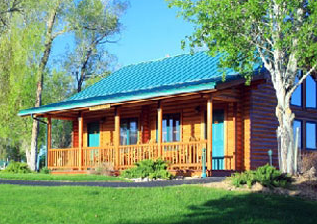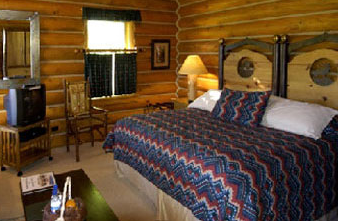Extraordinary landscapes on horses trained in the Parelli method
Meet wild horses
Cattle work with the wranglers
A comfortable accommodation typical of the West
Refined cuisine
44.383333015542, -107.166667
A beautiful, authentic 100+ year old cattle and horse ranch with generations of ranching experience just an hour from the town of Cody. Appreciate the vastness of the ranch's landscape, which spans approximately 300,000 acres of private land. Ride in the vast meadows to meet wild horses ... and in the high mountains with breathtaking landscapes. The ranch's accommodations and hospitality guarantee an authentic experience with their own breeding of Quarter Horses carefully trained with the Natural Horsemanship Pat Parelli method.
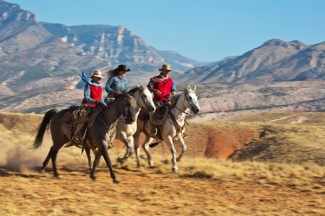
INDICATIVE ITINERAY *
With nearly 65,000 hectares to explore, you ride between vast prairies and mountain peaks, from alpine forests to the red rock country of Sedona.
July to mid-September is the best time: your treks will take you from high desert grasslands surrounded by the beauty of colorful hills, through hidden trails between shale cliff pines, through vast mountain meadows. It is quite common to see an amazing variety of wildlife including elk, deer and moose.
TRAIL RIDES :
The daily rides are varied and personalized according to the equestrian skills of the group.
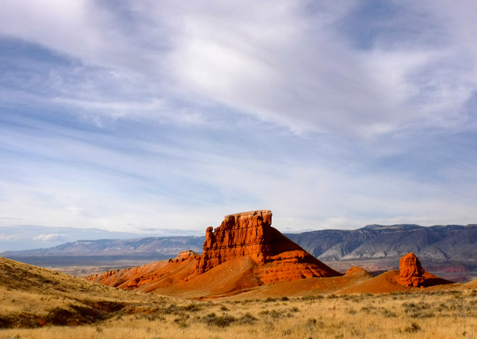 High Desert and Canyons in the Shell Valley Rides:
High Desert and Canyons in the Shell Valley Rides:
Ranging in elevation from 4,200 – 5,400 feet, these rides are mostly in the valley riding through the wide-open prairies, juniper trees, and rocky hidden canyons. In the hidden canyons, refreshing creeks flow with century old cottonwood trees offering you and your horse well-deserved shade.
Mountain Pastures & Alpine Meadows Rides:
You will see a variety of terrain above 7,500 feet riding through sage brush and high grasses imagining you are one of the cowboys in the movie Open Range or Lonesome Dove.
High Mountain Alpine Country Rides:
Elevations in these high-altitude areas range from 8,500 to 13,200 feet. The High country offers alpine forests, mountain lakes, streams and granite rock formations. Area’s above 8,000 feet are usually snow covered from the end of September to mid-June depending on weather conditions.
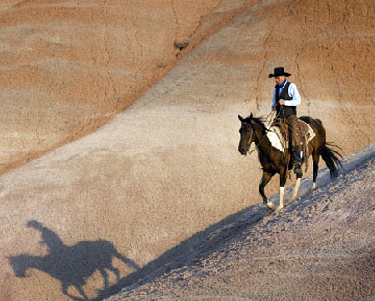 Devil’s Leap Ride:
Devil’s Leap Ride:
This ride features undulating red clay hills capped by wild grasses, sage and cactus. This intermediate ride culminates in a breathtaking vista from atop the famed Devil’s Leap, which drops 800 feet beneath you. Dare to take a look over the edge …
White Creek & Trapper Creek Canyon Rides:
Step back in time 100 years. Your ride winds through a picturesque tree canopied path, past old timber corrals, over a wooden bridge and opens into a wide-open lane perfect for an easy lope. These trails are half-day rides and they let you snake through the canyons with several crossings of White and Trapper Creeks.
Willet Lake Ride:
A breathtaking high-altitude full-day day ride in The Big Horn National Forest which takes you through open alpine meadows and pine forests to a picturesque mountain lake surrounded by a gorgeous alpine meadow. This is a ride you will not want to miss.
Copman’s Tomb Ride:
This spectacular rock which you can see every day from the lodge, is one of the most popular rides for its million-dollar view and scenic picnic. Looking up from the valley you would never think you could make it there on horseback. On a clear day you can look from the top of Copman’s Tomb across the Big Horn Basin to other ranges of the Rockies and Yellowstone National Park.
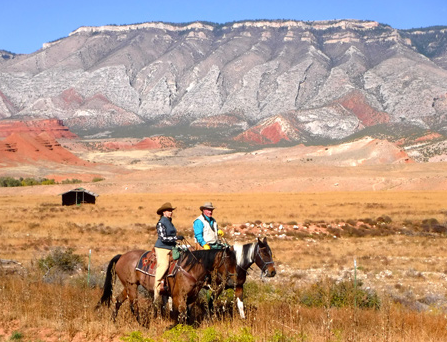 The Painted Hills Ride:
The Painted Hills Ride:
This half-day ride wanders among mounds the Indians called The Painted Hills, which are hills wwith beautiful colors due to the vibrant, ancient minerals mixed with Bentonite. We reach these hills riding through the sage brush and grass prairies in the valley.
The Sedona Ride:
This area near Trapper Creek Ranch, offers a ride which feels like you are in the red desert of Arizona due to the red, exposed Chugwater formations and half-desert prairies – cactus, coyotes and rattle snakes included.
The Five Fingers Ride:
This popular and thrilling valley ride takes you through rocky canyons with juniper trees and high desert while traveling along the slopes of the Big Horn Mountains, which rise 2,000 feet along your trail as a huge granite wall. Some of the exposed Precambrian rock is over a billion years old.
McCullough Peak Mustang Country:
During fall, winter and spring some of our cattle graze in a 100,000-acre pasture which is a high desert area shared with the McCullough Peak Mustangs. When riding through this country, you will probably be able to see wild horses grazing alongside antelope.
CATTLE WORK :
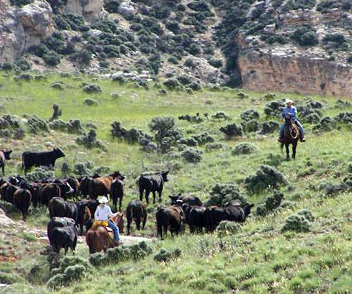 The ranch work is unpredictable and difficult to plan depending on weather and weather conditions, among other things.
The ranch work is unpredictable and difficult to plan depending on weather and weather conditions, among other things.
When working cattle, we adopt the principles of low-stress husbandry using the methods of Bud Williams, Curt Pate and other animal husbandry experts. As with any equestrian activity, it's all about pressure and release. To teach these principles we keep a small herd of yearlings at or near the ranch for our riders to enjoy and learn the basics of the job. A typical day involves learning the techniques of moving cattle around the arena, then going out to round up the cattle, leading them across the stream and uphill through the woods. After that, riders can enjoy team paddock, sorting, and other "games" on horseback. It is an ideal controlled setting. Livestock movements are slow and smooth.
From April to May, you can take part in the branding of cattle.
Late May to June: After the snow melts, we round up the foals and young cows in the mountains. The mountains are covered in the beautiful colors of spring flowers.
In July: the cows and calves must be grouped together and taken on horseback to their summer pastures. Your journeys will take you from high desert grasslands surrounded by the beauty of Painted Hills, up jagged trails hidden between pinon pines and shale slides, through vast open mountain meadows and nestling you amid cradles of tall pine forests. . It is quite common to see an amazing variety of wildlife including elk, deer and moose. Spontaneous fishing breaks have been known to occur on the mountain.
Mid-September through October: Enjoy the cool fall mornings, marvel at the brilliant rainbow of colors as the aspens turn from green to gold, and of course prepare to bring down mountain cattle. You will have plenty of opportunities to see elk and other wildlife as they descend from the high country.
MEETING:
Meeting at the ranch on Sunday afternoon from 2 p.m.
Transfer on request and quote from Cody airport.
DEPARTURE:
Saturday after breakfast.
Transfer on request and quote for Cody airport.
FLIGHTS:
Flights are not included in our rates as it is usually more attractive to book your flights yourself, a flight inclusive package is usually more expensive with agency commissions. However, we are at your disposal to help you find the best rates or offer you a trip with transport included on request.
NIVEAU: ![]()
All levels of riding, but it is required at least to be comfortable at three gaits to enjoy this stay. Riders are grouped by level groups.
RYTHM:
From 3 to 7 hours on horseback per day on average.
GUIDES:
English-speaking: the wranglers know the region perfectly.
GROUPS:
From 4 to 8 riders.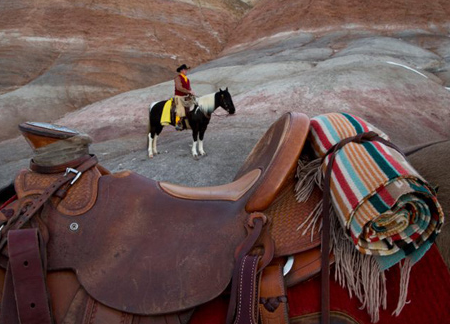 HORSES:
HORSES:
Excellent Quarter Horses, Paint Horses, Mustangs trained with the Parelli method.
TACK:
Western.
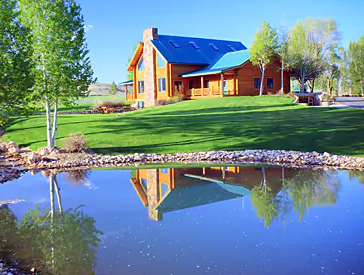 ACCOMMODATION:
ACCOMMODATION: ![]()
On the ranch, you are treated like a family guest. You stay in charming, comfortable cabins.
The main lodge building is a large western-style log structure built in 1992. It has large windows and porches overlooking lush green lawns and ponds and offers superb views. On the ground floor: comfortable armchairs, a library, a games table, a pool table, table football and a ping-pong table. There is an entertainment area with a large screen TV and computer with high speed internet access. Free laundry facilities and free Wi-Fi available throughout the property.
The lodge is surrounded by manicured lawns, shade trees and refreshing ponds. Paved walkways lead you to the chalets and other amenities such as the outdoor hot tub. The Shell Creek River meanders through the property, which, along with the fishing ponds, allows catch-and-release fishing right on the property.
The cabins:
Log cabins built in 1992 decorated. All cabins have a private bathroom with shower, a king-size bed or two double beds, air conditioning/heating, wireless Internet connection, cable TV and a telephone. There's also a mini-fridge stocked with free soft drinks that are replenished daily.
Casitas are one or two bedroom cabins. They are located in a two-storey, four-unit log building overlooking the orchard and creek. They have been recently renovated. Equipped with private bathroom with shower, king-size bed and sofa, air conditioning/heating, wireless Internet, cable TV, telephone, washer and dryer. There is also a mini-fridge stocked with free soft drinks replenished daily.g size (or 2 sets of bunk beds upon request), private bathroom and porch.
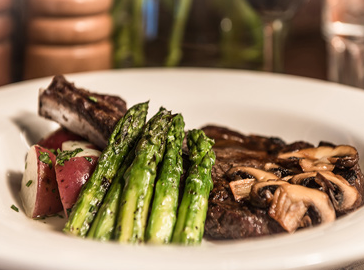 MEALS:All meals are included in your package. The emphasis is on the quality of the meals on this ranch. A cuisine based only on fresh products.
MEALS:All meals are included in your package. The emphasis is on the quality of the meals on this ranch. A cuisine based only on fresh products.
The breakfasts are hearty to prepare you for active days.
For day trips, hearty sandwiches are freshly prepared in the morning. Otherwise, a delicious hot lunch is served in the dining room of the main lodge.
In the evening: Western-style gourmet cuisine, accompanied by the wine or beverage of your choice (not included). Once a week (weather permitting) there is an outdoor barbecue. A bar is available.
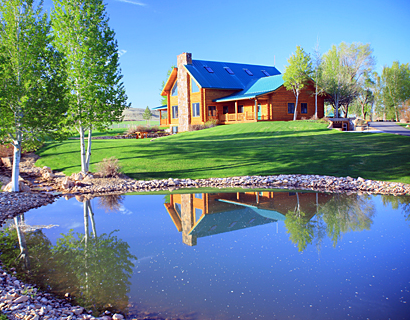
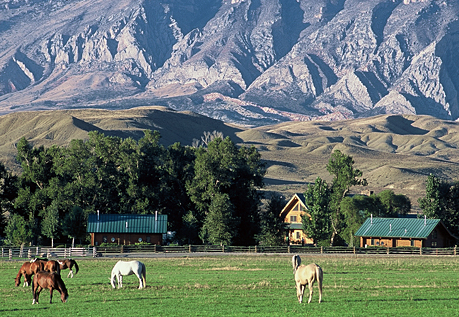
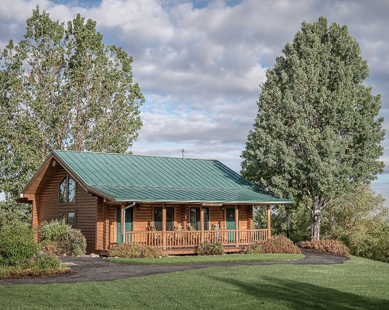
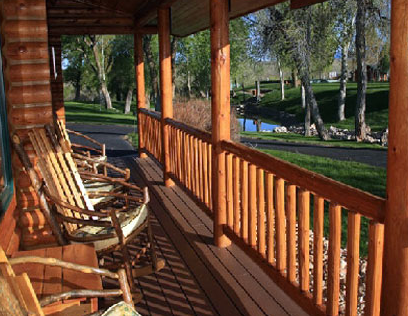
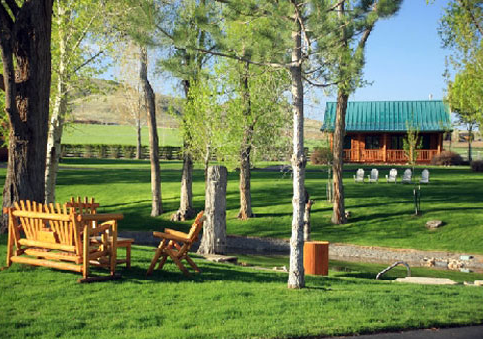
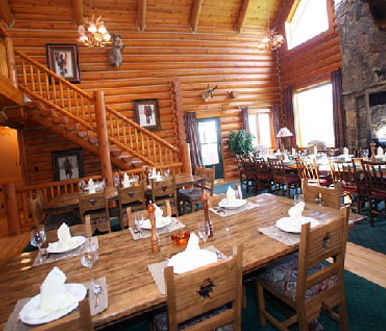
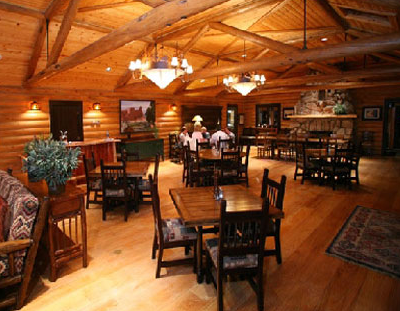
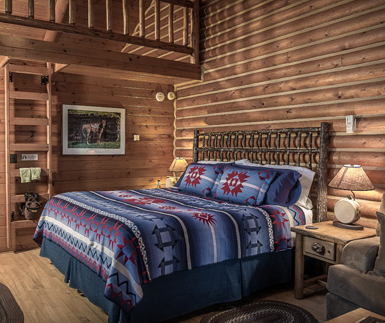
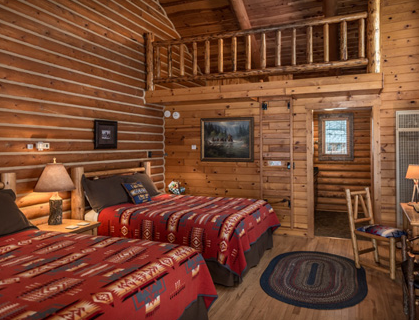
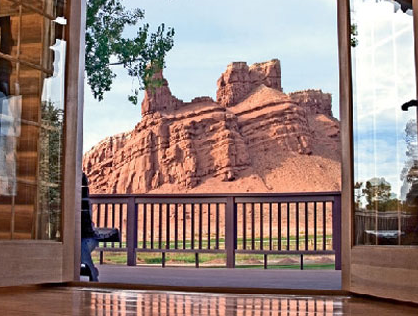
2026 PRICE / PER PERSON / 1 WEEK:
March 29 until May 23:
4200 € in 2 person bedroom
May 24 until October 17:
5400 € in 2 person bedroom
October 18 until October 31:
4500 € in 2 person bedroom
All dates:
Single bedroom supplement: 700 €
Gratuities: ±12% payable locally.
Booking fees: 15 €
Price may be revised downwards or upwards according to variations in the $/€ exchange rate.
2026 PRICE / PER PERSON / 2 WEEKS:
March 29 until May 23:
8500 € in 2 person bedroom
May 24 until October 17:
10000 € in 2 person bedroom
October 18 until October 31:
9000 € in 2 person bedroom
All dates:
Single bedroom supplement: On request
Gratuities: ±12% payable locally.
Booking fees: 15 €
Price may be revised downwards or upwards according to variations in the $/€ exchange rate.
THE PRICE INCLUDES:
Rental of the equipped horse, supervision, daily equestrian activities, full board accommodation, taxes, the financial guarantee of your payments by our travel operator deposit.
THE PRICE DOESN'T INCLUDE:
Individual insurance, transportation to get to and from the ranch, mandatory gratuities ±12%, alcoholic drinks, activities not included in the program, everything that is not indicated in "the price includes".
INSURANCE:
A civil liability and travel insurance (assistance/repatriation) is compulsory. A cancellation insurance is strongly recommended.
A payment by credit card can make you benefit from its possible insurance (check your contract).
We offer to Europe Union, Switzerland, Liechtenstein, Norway residents: the Chapka insurances.
Cap Security: full insurance with cancellation. Cap Cancellation: cancellation only.
See prices & information
FLIGHTS :
Flights are not included because it is more interesting to book directly your ticket: a transport package included is generally more expensive with agency commissions. However, we are at your disposal to help you find the best prices.
HIGH DEMAND: BOOK EARLY !
The dates and rates below are for a one-week stay. Two-week stays are available upon request.
| Dates | From | Infos | Contact |
|---|---|---|---|
| - | 4200€ | Information request | |
| - | 4200€ | Information request | |
| - | 4200€ | Information request | |
| - | 4200€ | Information request | |
| - | 4200€ | Information request | |
| - | 4200€ | Information request | |
| - | 4200€ | Information request | |
| - | 4200€ | Information request | |
| - | 5400€ | Information request | |
| - | 5400€ | Information request | |
| - | 5400€ | Information request | |
| - | 5400€ | Information request | |
| - | 5400€ | Information request | |
| - | 5400€ | Information request | |
| - | 5400€ | Information request | |
| - | 5400€ | Information request | |
| - | 5400€ | Information request | |
| - | 5400€ | Information request | |
| - | 5400€ | Information request | |
| - | 5400€ | Information request | |
| - | 5400€ | Information request | |
| - | 5400€ | Information request | |
| - | 5400€ | Information request | |
| - | 5400€ | Information request | |
| - | 5400€ | Information request | |
| - | 5400€ | Information request | |
| - | 5400€ | Information request | |
| - | 5400€ | Information request | |
| - | 5400€ | Information request | |
| - | 4500€ | Information request | |
| - | 4500€ | Information request |
CLIMATE:
| Month | Jan | Feb | Mar | Apr | May | Jun | Jul | Aug | Sep | Oct | Nov | Dec |
| Average High Temperature (°F) | 34 | 40 | 51 | 59 | 69 | 76 | 88 | 86 | 76 | 62 | 46 | 36 |
| Average Low Temperature (°F) | 13 | 17 | 24 | 32 | 40 | 48 | 53 | 51 | 42 | 33 | 23 | 14 |
| Average High Temperature (°C) | 1 | 5 | 10 | 15 | 21 | 26 | 31 | 30 | 24 | 16 | 8 | 2 |
| Average Low Temperature (°C) | -11 | -8 | -4 | 0 | 5 | 9 | 12 | 11 | 6 | 1 | -5 | -10 |
| Average Precipitation (days of rain) | 2 | 2 | 3 | 5 | 7 | 6 | 3 | 3 | 4 | 3 | 3 | 2 |
Source: NOAA
SEASONS:
During the summer the weather is generally clear, but seldom hot so be sure bring along some warm clothes. Summer is short but very enjoyable. It usually lasts from early June to mid September. Because of the altitude, really hot weather is rare. Evenings are cool enough that you may need a jacket. Summer snowfalls are rare, but during every summer there may be several days when nighttime temperatures approach the freezing point (32 degrees F / 0 degrees C). Thunderstorms are usually brief, and they are seldom violent. A typical summer thunderstorm lasts no more than about 15 minutes, just long enough to soak the ground.

